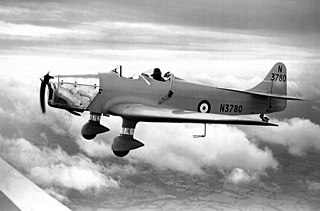
The Miles M.14 Magister is a British two-seat monoplane basic trainer aircraft built by the Miles Aircraft for the Royal Air Force and Fleet Air Arm. Affectionately known as the Maggie, the Magister was based on Miles' civilian Hawk Major and Hawk Trainer and was the first monoplane designed specifically as a trainer for the RAF. As a low-wing monoplane, it was an ideal introduction to the Spitfire and Hurricane for new pilots. Its sister design, the Miles Master was an advanced trainer also built by Phillips & Powis at Woodley.

The Miles M.11 Whitney Straight was a 1930s British two-seat cabin monoplane with dual-controls.

The Miles M.77 Sparrowjet was a twin-engined jet-powered racing aircraft built by F.G. Miles Limited by fitting Turbomeca Palas jets to the prototype Miles Sparrowhawk.

The Bristol Type 170 Superfreighter Mk 32 was a larger, stretched version of the Bristol Freighter designed for Silver City Airways for use on the short air ferry routes to France.
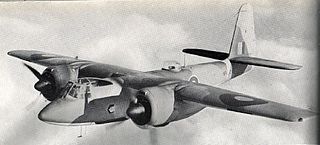
The Miles M.33 Monitor was a twin-engined British target tug aircraft designed and built by Miles Aircraft towards the end of the Second World War. Intended for use by the Royal Air Force and the Fleet Air Arm, the aircraft did not enter service with either.
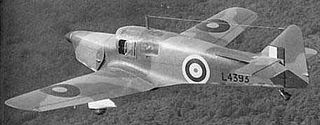
The Miles M.16 Mentor was a 1930s British single-engined three-seat monoplane training and communications aircraft built by Miles Aircraft Limited.

The Auster J/4 was a 1940s British single-engined two-seat high-wing touring monoplane built by Auster Aircraft Limited at Rearsby, Leicestershire.

The Auster J/1U Workmaster is a late 1950s British single-engined single-seat high-wing agricultural monoplane built by Auster Aircraft Limited at Rearsby, Leicestershire. Of traditional high-wing layout, it carries 90 gallons of spray fluid in a tank beside the pilot, an extra seat being provided for a passenger. The Lycoming 0-360-A engine of 180 h.p. driving a McCauley v.p. propeller giving it ample power; and slotted ailerons and balanced tail controls providing good handling. Oversize tyres were fitted. Take-off run at 2,550 lb gross weight and cruising speed at 65 per cent power are respectively 180 yd and 88 miles per hour (142 km/h). Britten-Norman spray gear was provided by Crop Culture, and this company ordered nine Workmasters.

The Percival Merganser was a light, civil transport of the late 1940s. It was a twin-engine, high-wing monoplane of all-metal, stressed skin construction with retractable tricycle undercarriage.

The Miles M.28 Mercury was a British aircraft designed to meet the need for a training and communications plane during the Second World War. It was a single-engined monoplane of wooden construction with a twin tail and a tailwheel undercarriage with retractable main units.

The Central Centaur IIA, a.k.a. Central C.F.2a, was a British civil six-passenger joyriding biplane aircraft produced by Central Aircraft Company Limited of London.

The de Havilland DH.29 Doncaster was a British long-range monoplane of the 1920s built by de Havilland.

The Avro 641 Commodore was a British single-engine five-seat cabin biplane built by Avro in the mid-1930s for private use. A total of only six were built, including the prototype.

The Avro 701 Athena is a British advanced trainer aircraft built by Avro in the late 1940s. It was designed to replace the North American Harvard in the Royal Air Force, but was bought only in small numbers, the competing Boulton Paul Balliol being preferred.
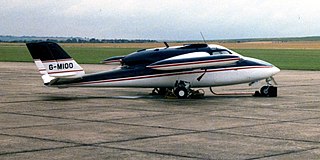
The Miles M.100 Student was built as a lightweight trainer as a private venture by F.G. and George Miles with development started in 1953. Although not specifically a Miles product, it was promoted as a British Royal Air Force trainer but failed to enter production.

The BAT F.K.24 Baboon was a British two-seat training biplane produced by British Aerial Transport Company Limited of London during World War I.
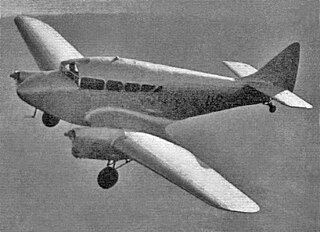
The Miles M.8 Peregrine was a 1930s British twin-engined light transport monoplane designed by Miles Aircraft Limited.

The Miles M.65 Gemini was a British twin-engined four-seat touring aircraft designed and built by Miles Aircraft at Woodley Aerodrome. It was the last Miles aircraft to be produced in quantity.
The Supermarine Type 179 was a British monoplane flying boat developed by Supermarine but cancelled before completion.
The Hurel-Dubois Miles HDM.105 was a transport aircraft fitted with very high aspect ratio wings for research purposes, building on research carried out with the Hurel-Dubois HD.10, and a stepping point to the planned production HDM.106 Caravan. The HDM.105/HDM.106 provided the starting point for the design of the Short SC.7 Skyvan.


















